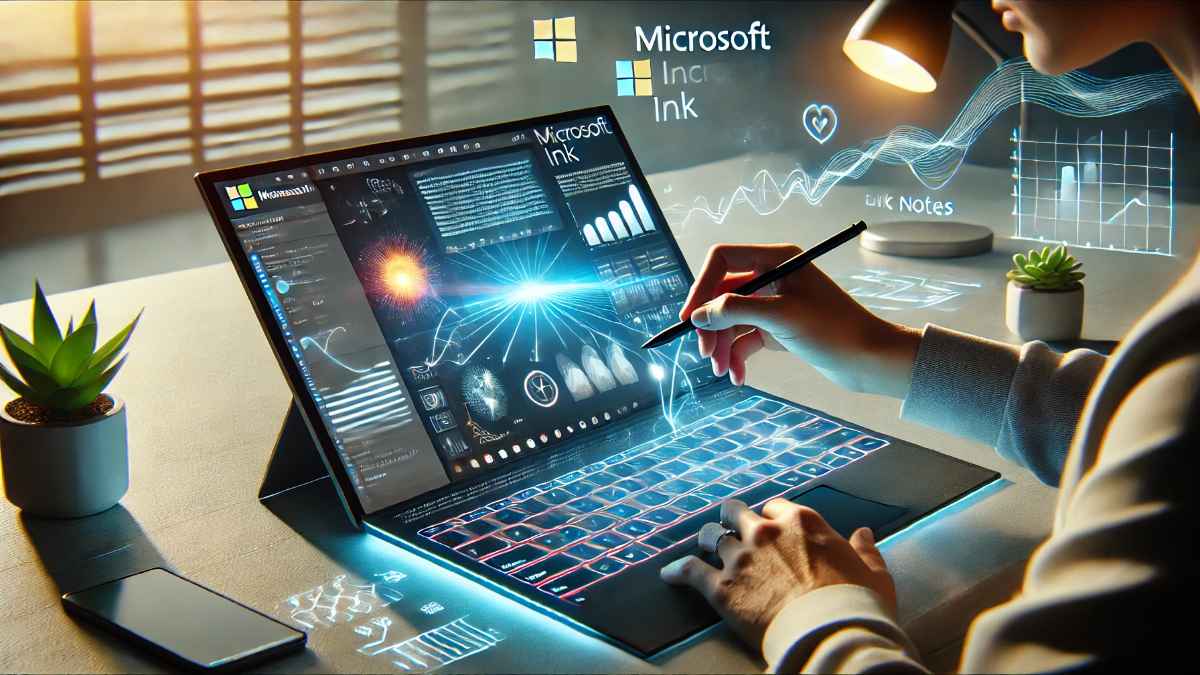Introduction
Microsoft Ink is a powerful digital inking technology that enhances creativity, productivity, and collaboration. Whether you’re a student taking notes, a professional annotating documents, or an artist creating stunning visuals, Microsoft Ink offers a seamless writing and drawing experience. This guide explores its features, benefits, and how you can maximize its potential.
What is Microsoft Ink?
Microsoft Ink is an integrated suite of digital inking tools available on Windows devices, allowing users to write, draw, and interact with their screens using a stylus or touch input. It works across multiple Microsoft applications such as OneNote, Word, PowerPoint, and Edge.
Key Features of Microsoft Ink
1. Windows Ink Workspace
- A dedicated hub for digital inking tools.
- Quick access to Sticky Notes, Sketchpad, and Screen Sketch.
- Compatible with Microsoft 365 apps.
2. Handwriting Recognition
- Converts handwritten notes into text.
- Works with multiple languages.
- Improves accuracy with AI-powered predictions.
3. Smart Annotation in Office Apps
- Allows users to highlight, underline, and comment directly on documents.
- Enhances collaboration with real-time annotations.
- Syncs seamlessly across devices via OneDrive.
4. Pressure Sensitivity & Tilt Support
- Mimics natural handwriting and drawing.
- Ideal for artists and designers using apps like Adobe Photoshop or CorelDRAW.
5. Ink to Math and Ink to Shape
- Converts handwritten equations into digital text.
- Automatically straightens drawn shapes for a polished look.
6. Integration with Microsoft Edge
- Enables web page annotation and note-taking.
- Enhances research and reading experience.
Benefits of Microsoft Ink
1. Boosts Productivity
- Simplifies note-taking and document editing.
- Speeds up workflows with seamless annotations.
2. Enhances Creativity
- Provides an intuitive drawing and sketching experience.
- Supports multiple pen styles and colors.
3. Improves Collaboration
- Real-time sharing of annotated documents.
- Works across Microsoft Teams and Office 365 apps.
4. Reduces Paper Waste
- Encourages digital note-taking, reducing the need for physical paper.
5. Supports Accessibility
- Helps individuals with disabilities interact more effectively with digital content.
How to Use Microsoft Ink
1. Setting Up Windows Ink Workspace
- Open Settings > Devices > Pen & Windows Ink.
- Customize your pen preferences.
- Launch Windows Ink Workspace from the taskbar.
2. Using Microsoft Ink in OneNote
- Open OneNote and select the Draw tab.
- Choose a pen type and start writing.
- Convert handwritten notes to text using the Ink to Text feature.
3. Annotating PDFs in Microsoft Edge
- Open a PDF in Edge.
- Click the Draw icon and start annotating.
- Save or share your annotations.
4. Sketching in Microsoft Whiteboard
- Open Microsoft Whiteboard.
- Use the pen tools to create diagrams and notes.
- Collaborate with team members in real-time.
Best Devices for Microsoft Ink in 2025
| Device | Screen Size | Stylus Support | Best For |
|---|---|---|---|
| Microsoft Surface Pro 9 | 13” | Surface Slim Pen 2 | Students & Professionals |
| Microsoft Surface Laptop Studio | 14.4” | Surface Pen | Designers & Creatives |
| HP Spectre x360 | 13.5” | HP Tilt Pen | General Productivity |
| Lenovo Yoga 9i | 14” | Lenovo Precision Pen | Artists & Sketching |

FAQs About Microsoft Ink
1. What apps support Microsoft Ink?
Microsoft Ink is compatible with OneNote, Word, PowerPoint, Microsoft Whiteboard, Edge, Adobe Photoshop, and other digital art applications.
2. Can I use Microsoft Ink without a stylus?
Yes, you can use your fingers for basic interactions, but a stylus provides a more precise experience.
3. How do I convert handwriting to text in Microsoft Ink?
Use the Ink to Text feature in OneNote or Word to convert handwritten notes into editable text.
4. Is Microsoft Ink available on all Windows devices?
Most modern Windows 10 and Windows 11 touchscreen devices support Microsoft Ink, but check your device specifications to confirm compatibility.
5. Which stylus works best with Microsoft Ink?
The Surface Slim Pen 2 and Surface Pen are the best choices for Microsoft devices, while HP Tilt Pen and Lenovo Precision Pen work well with compatible laptops.
6. Can I use Microsoft Ink on a non-touchscreen device?
No, Microsoft Ink requires a touchscreen for full functionality.
Conclusion
Microsoft Ink is an essential tool for digital creativity, note-taking, and collaboration in 2025. With features like handwriting recognition, smart annotations, and seamless integration across Microsoft applications, it enhances productivity and user experience. Whether you’re a student, professional, or artist, Microsoft Ink offers the flexibility and functionality needed for an efficient digital workflow.

